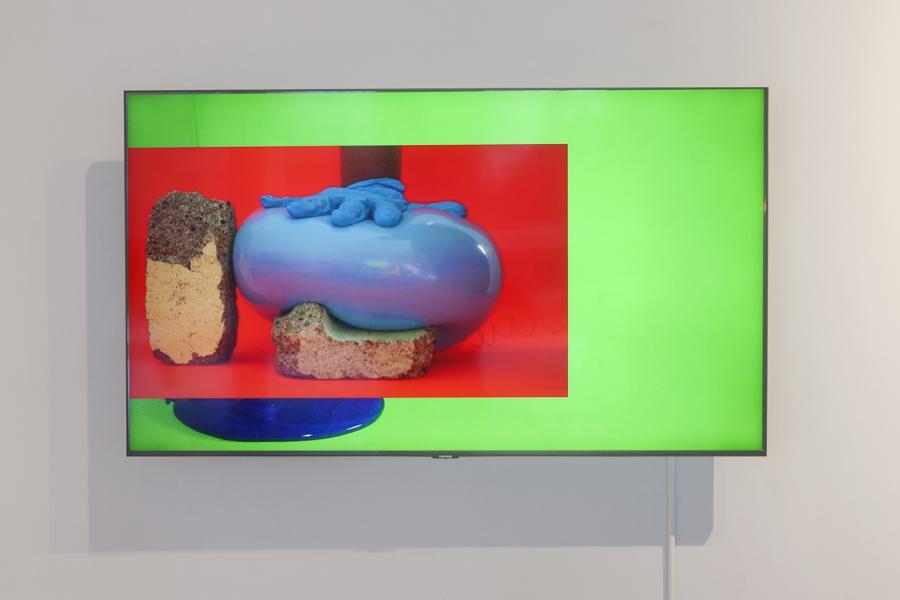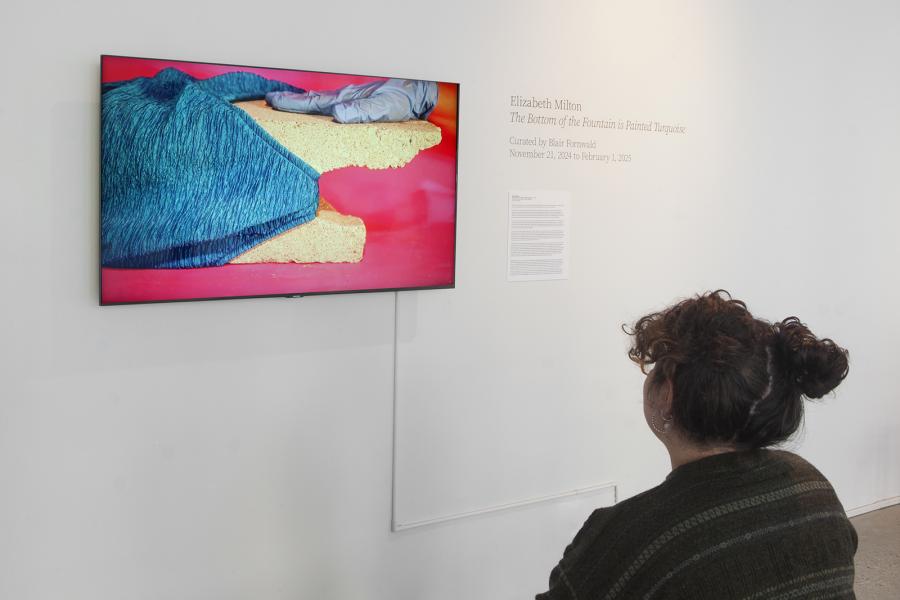Reflecting on the potential, use, and ownership of public space, Elizabeth Milton’s video, The Bottom of the Fountain is Painted Turquoise was produced during and after the artist’s 2019 residency at Artscape Gibraltar Point, on Toronto’s Centre Island.
Primarily used as a recreation site today, the Toronto Islands have a complex and contested history. Long considered sacred land to Indigenous communities, the Islands were the subject of a lengthy land claim dispute between the Crown and the Mississaugas, who claimed that the boundaries of the 1787 Toronto Purchase did not extend beyond the shoreline to encompass them. While the Toronto Purchase expropriated ten square miles of mainland territory for $3000 worth of trade goods, in 2010, the Missisaugas of the Credit First Nation received a $145 million cash settlement from the Government of Canada, pertaining to the use of the Toronto Islands.
In the mid-1860s, the City of Toronto acquired the Islands from the federal government, dividing land into lots for summer cottages, resort hotels, yacht clubs, sports stadiums, and amusement parks, capitalizing on the Islands’ three lovely beaches, which have, over the years, been reinforced and sculpted to prevent erosion. Hanlan’s Point, a clothing-optional beach on the western side of Centre Island has been an important queer space at least the 1940s, and was the site of the nation’s first Gay Pride celebrations in 1971. To this day, it remains a popular venue for cruising, swimming, and sunbathing.
In 1947, Toronto City Council approved year-round occupancy of the Islands, a temporary measure meant to address post WWII housing shortages, but by the mid-1950s, many of the homes and amenities were demolished, to create more recreational spaces, displacing the community that had recently made the Islands their home. In 1967, Centreville Amusement Park was built; its design mimicked the quaint and charming small-town neighborhood that had recently been destroyed to facilitate its construction. Today, a small community of around 300 homes remain on the Islands, but homeowners must adhere to very strict rules regarding the sale and purchase of these properties. Centreville Amusement Park still stands, perhaps a little worse for wear.
In Milton’s video, latex gloved hands assemble tableaux with a variety of materials that reference the architecture and aesthetics of public leisure spaces such as these. Chunks of concrete rubble, partially painted in bright poppy shades and flakes of turquoise paint—collected from along Centre Island’s coastlines and from a disused decorative water fountain nearby—are arranged like miniature landscapes, formalist paintings, or window displays selling nothing in particular. The gloved hands caress and manipulate these lumpen forms, adorning them with variously viscous, fluid, sparkly, squishy, and floppy materials and substances that brush up against and glide over rough edges. These ambiguous, playful, and strangely seductive scenes speak to the ever-changing nature of public space. Referencing the cycles of construction and decay, and portending the eventual rewilding of the built environment, they allude to the myriad ways we might use public space, queering it by inhabiting it in pleasurable, performative ways that its architects never intended.


Elizabeth Milton (she/they) is a performance and media artist of mixed European background who lives as a guest on the unceded, stolen lands of the xwməθkwəy̓əm (Musqueam), Skwxwú7mesh (Squamish) and Səl̓ílwətaʔ (Tsleil-Waututh) First Nations. Her video and photo-based works utilize absurdist character-play and camp materiality to explore maximalist femininity, amateur spectacle and the garish refuse of commercial culture. Her work has been presented in Canada, the United States and Europe. Her work recently screened as part of the 2024 group exhibition, We Made This Mostly at Home with Stuff We Already Had in Our Apartment: Prop Performance and Camp in Contemporary Canadian Video Art, curated by Chloë Lum & Yannick Desranleau at FAB Gallery, University of Alberta in Edmonton. Her performance, Queen Tilly & the Marys, a raucous response to musical theatre made in collaboration with a group of elders, was presented at VIVO Media Arts Centre in Vancouver as part of the 2023 LIVE Performance Art Biennale. She is a faculty member and Assistant Chair in the Department of Fine Arts at Langara College, snəw̓eyəɬ leləm̓, Vancouver, where she instructs studio courses in Media and Performance.
